Minimalism & Eco-Friendly Habits: Simplify and Sustain Life
Category: Lifestyle
Embrace Simplicity and Sustainability in Your Everyday Life
If you've found yourself overwhelmed by clutter, waste, and the relentless pace of modern living, you're not alone. Many individuals seeking a clearer, more meaningful existence embark on a journey toward minimalism and eco-friendly habits, yet finding practical guidance tailored to simplify their lifestyle while sustaining the planet can be challenging. Perhaps you’re already familiar with minimalism or green living but want actionable steps that effectively marry these philosophies for lasting impact. This post is designed specifically for you: someone eager to reduce excess, live intentionally, and embrace habits that nurture both your wellbeing and the environment. Unlike generic advice, here we’ll break down the interconnectedness of minimalism and eco-friendly living, offering a structured path to declutter not just your home but your habits, consumption, and mindset. From reducing waste to mindful purchasing and sustainable routines, this guide offers clarity and inspiration to transform your lifestyle for greater fulfillment and environmental harmony. Continue reading to discover practical strategies that honor simplicity and sustainability at once.
- Embrace Simplicity and Sustainability in Your Everyday Life
- Understanding the Core Principles of Minimalism and Eco-Friendly Living
- Assessing Your Current Lifestyle: Identify Clutter and Unsustainable Habits
- Decluttering with Purpose: Eco-Conscious Strategies for Simplifying Your Space
- Adopting Sustainable Consumption Habits: Mindful Purchasing, Buying Secondhand, and Supporting Ethical Brands
- Integrating Eco-Friendly Daily Routines: Reducing Plastic, Conserving Resources, and Choosing Sustainable Transportation
- Simplifying Digital Life and Mental Clutter: Minimizing Digital Distractions for Mental Clarity
- Meal Planning and Reducing Food Waste: Strategies for Eco-Friendly Grocery Shopping, Meal Prep, and Composting
- Financial Benefits and Freedom through Minimalism and Eco-Friendly Choices
- Creating a Supportive Environment and Community: Building Connections with Like-Minded Individuals
- Sustaining Your Journey: Tips for Long-Term Commitment, Adapting Habits as Life Changes, and Celebrating Milestones
Understanding the Core Principles of Minimalism and Eco-Friendly Living
At the heart of both minimalism and eco-friendly living lies a profound commitment to intentionality and simplicity. Minimalism is fundamentally about decluttering—not just physical possessions but also mental and emotional excess—to create space for what truly matters. It encourages living with less, focusing on quality over quantity, and consciously choosing items and habits that add genuine value to your life. On the other hand, eco-friendly living centers around environmental responsibility, emphasizing sustainable choices that reduce waste, conserve resources, and minimize your carbon footprint.
These philosophies share several key values that complement each other perfectly:
- Intentional Consumption – Prioritizing thoughtful purchasing decisions that avoid unnecessary items, reducing both clutter and environmental strain.
- Resource Conservation – Embracing habits that save energy, water, and raw materials, contributing to a healthier planet.
- Waste Reduction – Minimizing disposable products and embracing reusability and recycling to prevent landfill overflow.
- Simplified Living – Streamlining daily routines and possessions to enhance wellbeing, reduce stress, and foster mindfulness.
When combined, minimalism and eco-consciousness offer a holistic approach to simplifying life while simultaneously reducing environmental impact. By choosing fewer but better-quality items, opting for multi-functional belongings, and adopting sustainable daily practices, you can create a lifestyle that is not only less cluttered but also more aligned with planetary health. This synergy helps transform consumption patterns, promoting long-term sustainability and a clearer, more fulfilling way of living.
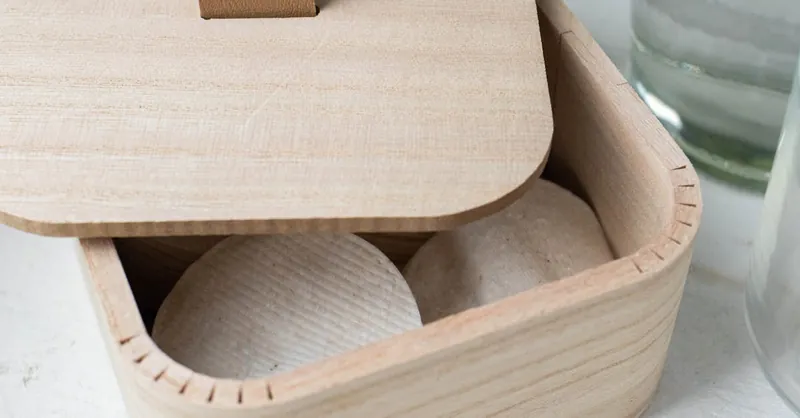
Image courtesy of Maria Tyutina
Assessing Your Current Lifestyle: Identify Clutter and Unsustainable Habits
Before you can embrace a minimalist and eco-friendly lifestyle fully, it’s essential to conduct an honest self-assessment of your current habits, possessions, and routines. This evaluation helps uncover areas where clutter, waste, and inefficiency silently accumulate, providing a clear starting point for impactful change. Begin by observing your daily environment and consumption patterns through these key lenses:
- Physical Clutter Audit
Walk through your living spaces and identify items that no longer serve a purpose or add value. Excessive belongings often contribute to mental fatigue and increased environmental burden. Ask yourself: - How many items do I use regularly versus those simply occupying space?
- Are there duplicates or broken things I never repair or donate?
-
Which possessions can be repurposed, donated, or recycled?
-
Waste Production Review
Take note of the types and volume of waste your household generates in a week. Pay attention to single-use products, packaging waste, food scraps, and disposable items. This insight will highlight hotspots for reducing landfill contributions and adopting sustainable alternatives. -
Energy and Resource Consumption Check
Evaluate your patterns around electricity, water, and other resource use. Are appliances left on unnecessarily? Is water used efficiently during daily routines? Identifying wasteful habits here can lead to meaningful adjustments that benefit both your utility bills and the planet. -
Consumer Behavior Reflection
Analyze your purchasing tendencies: impulse buys, brand loyalty, and preference for disposable versus durable goods. Understanding your consumption triggers allows you to pivot toward mindful buying decisions rooted in quality, longevity, and sustainability.
By systematically assessing these areas, you gain a comprehensive understanding of your lifestyle’s environmental and psychological load. This foundation empowers you to plan focused decluttering efforts, waste reduction strategies, and habit changes that align with minimalist and eco-conscious principles. Taking the time for this self-reflection will ensure your journey toward simplicity and sustainability is both intentional and effective.
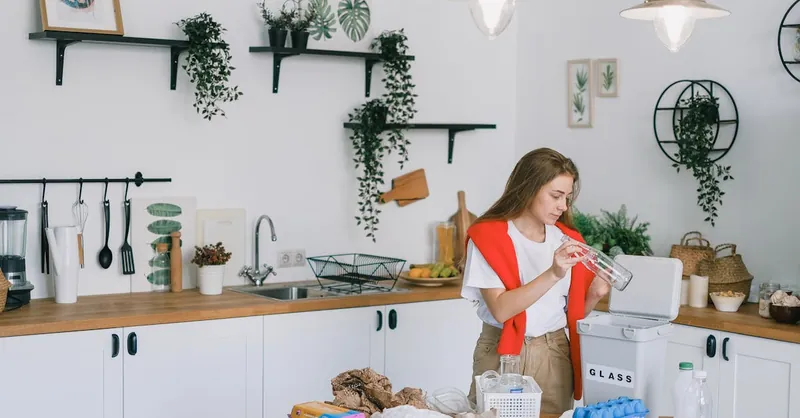
Image courtesy of SHVETS production
Decluttering with Purpose: Eco-Conscious Strategies for Simplifying Your Space
Embarking on a decluttering journey is a powerful step toward minimalism, but doing so with an eco-friendly mindset ensures that your efforts contribute positively to the planet as well as your wellbeing. Rather than rushing to discard items thoughtlessly, adopting purposeful decluttering strategies helps you minimize waste and extend the life cycle of your belongings through mindful disposal, donating, and recycling practices.
Practical Steps for Eco-Conscious Decluttering
- Sort Intentionally, Sort Thoughtfully
Begin by categorizing your items into clear groups such as: - Keep: Essentials and cherished belongings that add value
- Donate or Sell: Usable items that others might benefit from
- Recycle: Materials like paper, metal, glass, textiles, and electronics that require specialized disposal
- Compost: Organic waste from natural textiles or household scraps
-
Dispose Responsibly: Non-recyclables and hazardous waste handled by local authorities
-
Choose Green Disposal Options
Instead of sending clutter straight to landfill, research local eco-friendly disposal options: - Use municipal recycling centers that accept electronics, batteries, and bulky waste
- Locate textile recycling programs or charity shops that prioritize sustainability
-
Participate in community swap events to exchange items without waste
-
Prioritize Donation to Extend Usefulness
Donating usable belongings supports social good and reduces environmental impact by keeping items in circulation longer. Consider donating to: - Local shelters, schools, or non-profits that welcome your items
- Online platforms focused on rehoming goods sustainably
-
Organizations that refurbish and redistribute electronics or furniture
-
Minimize New Clutter Creation Post-Declutter
Adopt habits that prevent re-accumulating unnecessary items, such as: - Implementing a "one-in, one-out" rule
- Choosing quality over quantity to reduce turnover
- Avoiding impulse purchases by evaluating need and sustainability before buying
By merging minimalist decluttering with eco-conscious disposal and donation, you create a dual impact—transforming your living space into a serene, clutter-free haven while actively reducing your ecological footprint. This purposeful approach ensures that simplifying your home aligns with your commitment to sustainability, making every step of decluttering an opportunity to contribute positively to the environment.

Image courtesy of RDNE Stock project
Adopting Sustainable Consumption Habits: Mindful Purchasing, Buying Secondhand, and Supporting Ethical Brands
A cornerstone of combining minimalism with eco-friendly living lies in adopting sustainable consumption habits that emphasize quality, longevity, and responsibility over fast, impulsive buying. Mindful purchasing means critically evaluating your true needs and the environmental impact behind every item you bring into your life. One of the most effective strategies to reduce your ecological footprint while keeping your belongings purposeful is to buy secondhand. Shopping preloved items—from clothing and furniture to electronics—extends product life cycles, reduces demand for new resource extraction, and helps curb waste generation.
When you do need to purchase new products, prioritizing ethical and sustainable brands can dramatically improve the ecological and social consequences of your consumption. Look for companies that use environmentally friendly materials, implement fair labor practices, and maintain transparent supply chains. By supporting these brands, you actively encourage industry shifts toward greener production methods and help drive broader systemic change.
Key Tips for Sustainable and Mindful Consumption
-
Pause and Reflect Before Buying
Ask yourself if the item serves multiple purposes, replaces something broken, or genuinely fulfills a needed function. Avoid impulse purchases by setting a waiting period (e.g., 30 days). -
Choose Quality Over Quantity
Invest in durable, repairable products that stand the test of time rather than disposable, trend-driven goods. -
Explore Secondhand and Upcycled Markets
Thrift stores, online resale platforms, and community swap events are treasure troves for unique items that reduce demand for virgin resources. -
Research Brand Sustainability Credentials
Check for certifications like Fair Trade, B Corp, Global Organic Textile Standard (GOTS), or cruelty-free labels to ensure ethical sourcing. -
Support Local Artisans and Small Businesses
This reduces the carbon footprint associated with long-distance shipping and often encourages more sustainable production methods.
Integrating these sustainable consumption habits into your minimalist lifestyle not only declutters your space but also actively diminishes your environmental impact. With every intentional purchase or secondhand find, you champion a circular economy where resources are respected, waste is minimized, and ethical standards are prioritized. This mindful approach fosters a deeper connection with your possessions, turning every item you own into a meaningful part of a sustainable, simplified life.

Image courtesy of Anna Tarazevich
Integrating Eco-Friendly Daily Routines: Reducing Plastic, Conserving Resources, and Choosing Sustainable Transportation
To truly embrace a minimalist and eco-friendly lifestyle, incorporating sustainable daily habits is essential. These routines not only reduce your environmental impact but also help streamline your life by fostering intentional, low-waste living. Simple changes such as reducing plastic use, conserving energy and water, and opting for sustainable transportation reinforce minimalist values by encouraging mindful choices that benefit both you and the planet.
Reduce Plastic Use for a Cleaner, Simpler Life
Plastic pollution is one of the most pressing environmental challenges today, but reducing plastic consumption aligns perfectly with minimalism’s goal of eliminating unnecessary clutter and waste. Start by:
- Switching to reusable alternatives such as stainless steel water bottles, cloth shopping bags, glass storage containers, and bamboo or metal straws.
- Avoiding single-use plastics like disposable cutlery, packaged snacks, and plastic wrap by preparing meals ahead and buying unpackaged products where possible.
- Refusing freebies and disposables—politely declining plastic bags, straws, and utensils when offered helps reduce unnecessary plastic generation on a collective level.
These steps not only minimize your household’s plastic footprint but also simplify your consumption habits by replacing disposable items with durable, sustainable essentials.
Conserve Energy and Water with Intentional Habits
Energy and water conservation directly supports sustainability while reducing monthly bills and dependency on natural resources. Incorporate these easy yet effective changes:
- Turn off lights, electronics, and appliances when not in use; consider using smart power strips to eliminate standby power drain.
- Opt for energy-efficient lighting such as LED bulbs and reduce heating or cooling by layering clothing and using programmable thermostats.
- Shorten showers and fix leaks promptly to minimize water waste; install low-flow showerheads and faucet aerators to maintain comfort while using less water.
- Use natural light and air-drying methods for laundry instead of electric dryers when weather permits.
By consciously monitoring and reducing resource consumption, you create a more sustainable household that reflects minimalist values of efficiency and intention.
Choose Sustainable Transportation Modes
Transportation significantly contributes to carbon emissions, but switching to more eco-friendly options is a powerful way to reduce your ecological footprint and simplify your lifestyle. Consider:
- Walking or biking for short trips to improve health, reduce fossil fuel use, and increase daily mindfulness.
- Utilizing public transit to lower individual emissions and support community infrastructure.
- Carpooling or ride-sharing when a vehicle is necessary to minimize the number of cars on the road.
- Investing in electric or hybrid vehicles if feasible, to cut down on dependence on fossil fuels and reduce long-term environmental impact.
Integrating these eco-conscious transportation habits complements minimalist goals by encouraging purposeful movement and reducing reliance on cluttered lifestyles centered around car ownership.
By weaving these eco-friendly daily routines into your minimalist lifestyle, you create a harmonious blend of simplicity and sustainability. Reducing plastic use, conserving energy and water, and choosing sustainable transportation not only protect the environment but also refine your daily habits to prioritize intention, reduce waste, and foster a clearer, more fulfilling life.

Image courtesy of cottonbro studio
Simplifying Digital Life and Mental Clutter: Minimizing Digital Distractions for Mental Clarity
In our increasingly connected world, digital clutter and information overload can weigh heavily on mental wellbeing and contradict the minimalist principle of intentionality. Just as physical possessions can fill your living space unnecessarily, unchecked digital distractions—from constant notifications and excessive screen time to an overflowing email inbox—can create mental chaos, stress, and a sense of overwhelm. Simplifying your digital life is therefore essential to achieving mental clarity and fostering a focused, purposeful mindset aligned with minimalism and eco-friendly living.
Practical Strategies to Minimize Digital Distractions and Information Overload
-
Declutter Your Digital Environment
Regularly organize files, delete unused apps, and unsubscribe from unnecessary newsletters to create a streamlined digital workspace. A tidy digital space reduces cognitive load and saves energy spent on navigating excess information. -
Set Boundaries for Screen Time
Designate specific times for checking emails, social media, and news to avoid constant interruptions. Using features like app timers or “Do Not Disturb” modes can enforce these boundaries, helping you stay present and intentional with your time. -
Prioritize Meaningful Digital Interactions
Focus on communication channels and platforms that add value to your life or work. Limiting time on superficial or distracting content encourages deeper engagement and supports mental wellbeing. -
Adopt Minimalist Digital Tools
Choose simple, multifunctional apps over cluttered, feature-heavy ones. Tools designed with minimalist ethos—such as note-taking apps free from distractions or calendar apps with essential features—can improve productivity and reduce overwhelm. -
Practice Digital Mindfulness
Incorporate regular digital detoxes or mindful tech breaks that allow your mind to rest and reset. This habit reduces stress, enhances creativity, and supports a balanced relationship with technology.
By intentionally simplifying your digital habits, you reduce cognitive overload, increase focus, and create mental space for what truly matters. This digital minimalism not only complements your eco-friendly lifestyle—by reducing energy use on devices and servers—but also nurtures emotional clarity and sustainable wellbeing in the modern age. Embracing these digital decluttering techniques helps anchor your life in simplicity, purpose, and environmental consciousness, elevating your journey towards a clear, intentional, and balanced existence.

Image courtesy of Pascal 📷
Meal Planning and Reducing Food Waste: Strategies for Eco-Friendly Grocery Shopping, Meal Prep, and Composting
One of the most impactful ways to embrace both minimalism and eco-friendly living is through intentional meal planning and minimizing food waste. Thoughtful grocery shopping combined with strategic meal preparation not only simplifies your daily routine but also significantly reduces the environmental footprint associated with food production, packaging, and disposal. By planning meals ahead, you avoid impulsive purchases that contribute to cluttered pantries and uneaten food, aligning perfectly with minimalist values of simplicity and purpose.
Effective Meal Planning for a Sustainable, Minimalist Kitchen
-
Create a Weekly Meal Plan
Map out meals based on what you already have at home to reduce excess buying. This practice helps prioritize fresh, seasonal produce and decreases the temptation to purchase items that go unused. -
Make a Precise Shopping List
Use the meal plan to craft a focused, ingredient-specific grocery list that eliminates unnecessary purchases, reducing both clutter and packaging waste. -
Choose Minimal Packaging and Local Products
Opt for bulk bins, farmers’ markets, or stores that encourage reusable containers. Supporting local produce decreases carbon emissions related to transportation and enhances freshness and nutrition. -
Cook in Batches and Use Leftovers Creatively
Preparing meals in bulk saves time and energy while preventing food spoilage. Repurpose leftovers into new dishes to maximize ingredient use and minimize waste.
Reducing Food Waste Through Smart Storage and Composting
Proper storage techniques extend the life of fresh foods, preventing premature spoilage and waste. Use airtight containers, clear labeling, and portion-appropriate packaging to maintain freshness and visibility of food items. Additionally, integrating composting practices at home transforms unavoidable organic scraps into nutrient-rich soil, closing the sustainability loop in your kitchen.
-
Start a Simple Compost System: Whether a countertop bin or outdoor compost pile, composting fruit peels, vegetable scraps, coffee grounds, and eggshells reduces landfill waste and methane emissions.
-
Educate Yourself About Food Lifecycles: Understanding the difference between “best before” and “use by” dates helps avoid discarding safe-to-eat food unnecessarily.
By combining organized meal planning, strategic grocery shopping, and composting, you foster a minimalist kitchen that supports environmental sustainability and nourishes your well-being. These habits reduce clutter, streamline your food routines, and promote a mindful relationship with what you consume—helping you lead a simpler, greener life.
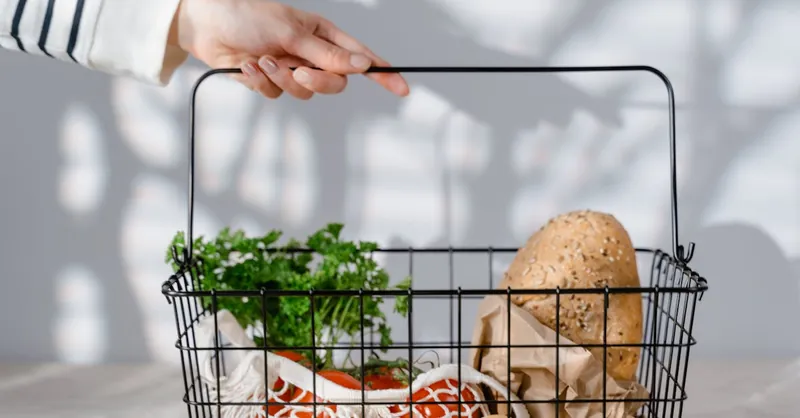
Image courtesy of Tima Miroshnichenko
Financial Benefits and Freedom through Minimalism and Eco-Friendly Choices
Embracing minimalism alongside eco-friendly habits not only nurtures personal wellbeing and environmental health but also offers significant financial advantages that pave the way to greater economic freedom. By consciously simplifying consumption and reducing wasteful spending, you can dramatically lower monthly expenses and build sustainable wealth over time. Minimalism encourages purchasing fewer but higher-quality items, which tend to last longer and require less frequent replacement, cutting down on repetitive costs. Meanwhile, eco-friendly choices—such as reducing energy use, minimizing food waste, and embracing reuse—directly translate into tangible savings and smarter resource management.
How Simplifying Consumption Boosts Your Finances and Independence
-
Cutting Unnecessary Purchases
Intentional buying habits reduce impulse spending on items that provide little value, freeing up money for more meaningful investments or savings. -
Lower Utility Bills Through Conservation
Energy-efficient appliances, mindful electricity and water use, and sustainable transportation choices like biking or public transit shrink utility and fuel costs dramatically. -
Maximizing Longevity of Products
Investing in durable, repairable goods diminishes the financial drain caused by constant replacements, while secondhand shopping offers quality at lower prices. -
Reducing Food Spending and Waste
Thoughtful meal planning and composting minimize food waste, ensuring you get the most from your groceries and avoid costly disposable habits. -
Minimizing Debt and Financial Stress
With fewer material possessions and simpler routines, managing personal finances becomes clearer and less overwhelming, fostering a mindset oriented toward savings and reduced consumption.
By integrating minimalism and eco-friendly living, you cultivate a financially sustainable lifestyle that supports long-term financial independence. This intentional approach empowers you to allocate resources wisely, avoid consumer debt, and build a resilient economic foundation—creating a virtuous cycle where simplicity fuels freedom, and responsible living nurtures prosperity. Ultimately, the financial benefits of this lifestyle extend beyond monetary savings, enriching your quality of life with clarity, security, and purpose.

Image courtesy of Photo By: Kaboompics.com
Creating a Supportive Environment and Community: Building Connections with Like-Minded Individuals
Sustaining a minimalist and eco-friendly lifestyle can be greatly enhanced by cultivating a supportive environment and community that shares your values of simplicity, sustainability, and intentional living. Connecting with like-minded people not only offers motivation and accountability but also opens doors to collective learning, resource sharing, and emotional encouragement—key components for long-term success on your journey toward minimalism and green habits.
How to Find and Build Meaningful Connections for Minimalist and Eco-Friendly Living
-
Join Local and Online Minimalism Groups
Explore social media platforms, forums, and websites dedicated to minimalism and sustainable living where members exchange tips, challenges, and success stories. Participating in these communities fosters a sense of belonging and continuous inspiration. -
Attend Workshops, Meetups, and Swap Events
Local events focused on decluttering, zero waste, and sustainable lifestyle practices provide opportunities to network, exchange goods, and learn hands-on skills like composting, DIY natural products, or repair techniques. -
Engage with Environmental and Social Initiatives
Volunteering for cleanups, community gardens, or advocacy groups helps connect you with passionate individuals working toward environmental stewardship and social responsibility, reinforcing your commitment through shared action. -
Create Accountability Partnerships
Find a friend or group with similar goals to regularly check in, share progress, and discuss challenges. Accountability nurtures consistency while making the minimalist and eco-friendly journey more enjoyable and less daunting. -
Leverage Technology for Connection and Resources
Utilize apps and platforms designed for sustainable living, such as zero-waste guides, minimalist habit trackers, or community marketplaces. These digital tools supplement your network with practical support and tips.
By intentionally building and nurturing connections within a community that values minimalism and environmental mindfulness, you create a powerful ecosystem that sustains your motivation, fuels ongoing learning, and strengthens your resolve. This social support transforms lifestyle changes from isolated efforts into shared journeys, amplifying your impact while enriching your personal experience of living simply and sustainably.
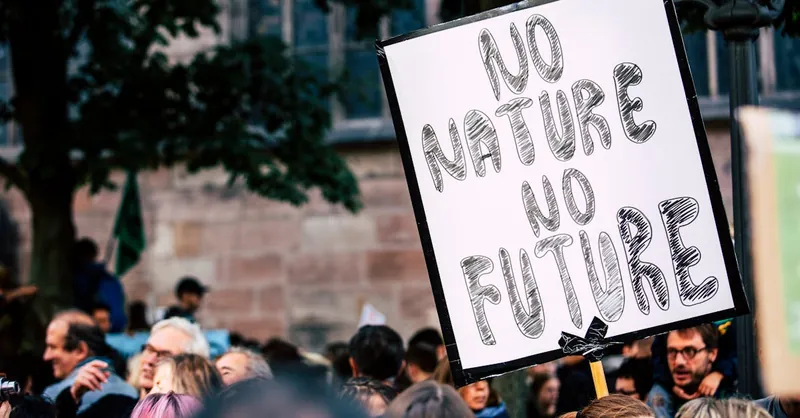
Image courtesy of Markus Spiske
Sustaining Your Journey: Tips for Long-Term Commitment, Adapting Habits as Life Changes, and Celebrating Milestones
Embarking on a minimalist and eco-friendly lifestyle is a rewarding decision, but sustaining this journey over the long term requires intentional strategies that adapt to your evolving circumstances. Life is dynamic; your needs, priorities, and environment will change, and so should your habits if you want to maintain both simplicity and sustainability without feeling restricted or overwhelmed.
Key Strategies to Maintain Commitment and Adaptability
-
Embrace Flexibility and Continuous Reflection
Regularly reassess your minimalist and eco-friendly practices to align with current life stages—whether you’re starting a family, moving, or changing jobs. This reflective habit ensures that your lifestyle remains practical, relevant, and empowering rather than rigid or burdensome. -
Set Realistic, Incremental Goals
Break down your broader intentions into manageable objectives, such as reducing plastic use month-by-month or decluttering one room per season. Celebrating small wins cultivates motivation and momentum without the pressure of overnight transformation. -
Create Rituals That Reinforce Your Values
Develop simple daily routines—like a zero-waste shopping habit or a weekly digital declutter—that consistently embed minimalism and eco-consciousness into your life. These rituals become natural anchors that keep your lifestyle sustainable through fluctuations. -
Utilize Tracking and Journaling Tools
Keeping track of your progress through journals or apps helps identify successful habits and areas needing adjustment, boosting accountability and self-awareness. Documenting challenges alongside achievements nurtures a growth mindset essential for long-term change. -
Celebrate Milestones Meaningfully
Recognize and reward your progress by reflecting on how far you’ve come, whether by hosting a low-waste gathering, gifting yourself a thoughtfully chosen sustainable item, or sharing your journey with your community. Celebrations reinforce positive behavior and increase overall satisfaction.
By cultivating adaptability, setting achievable goals, and recognizing milestones, you empower yourself to remain committed to a minimalist and eco-friendly lifestyle throughout life’s transitions. This dynamic approach not only prevents burnout but also deepens your connection to the core values of intentional living and sustainability, ensuring your journey remains fulfilling and impactful for the planet and your wellbeing.
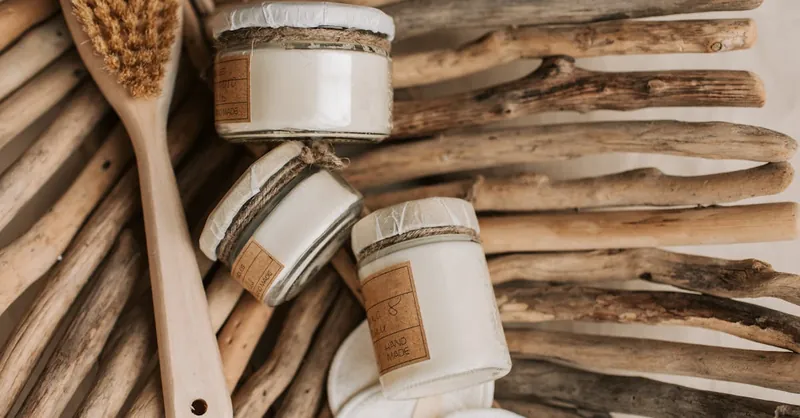
Image courtesy of Vlada Karpovich
